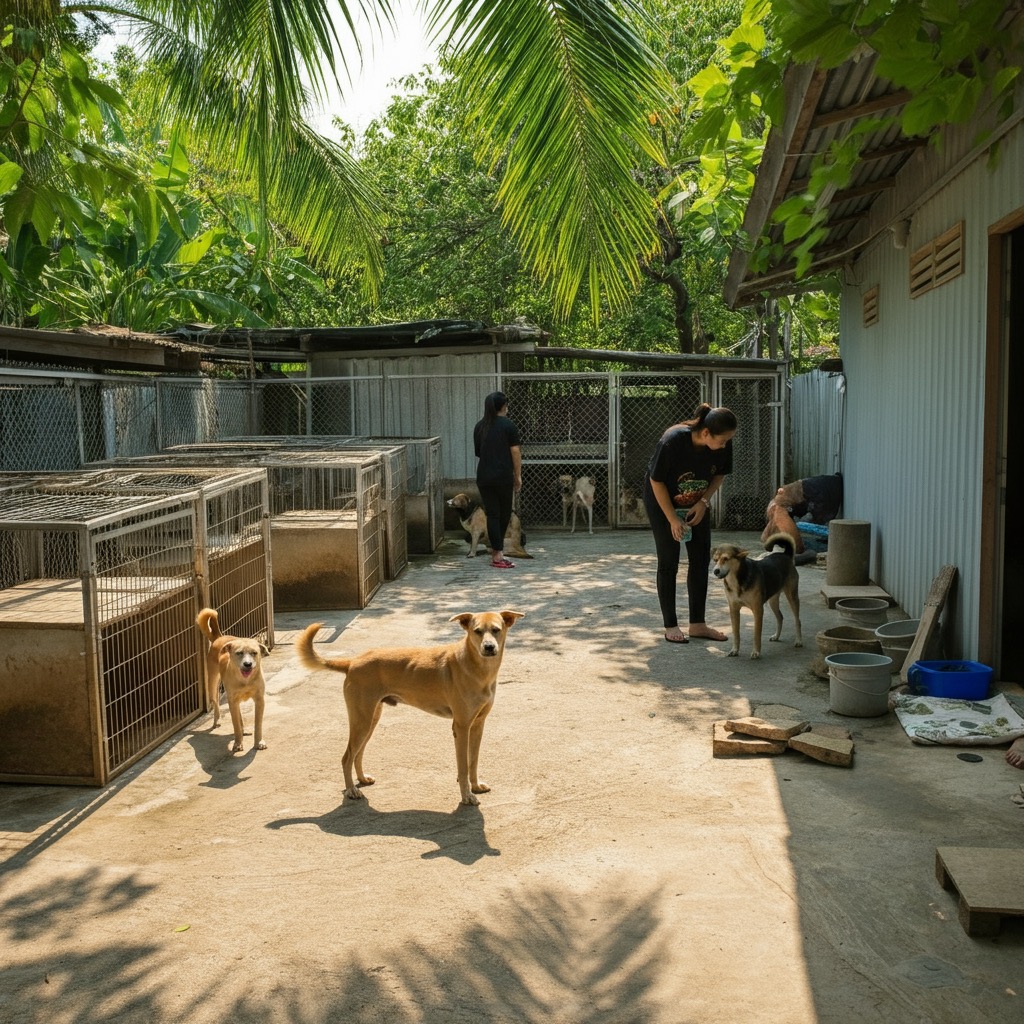Battersea Dogs Home 1896
A Journey of Compassion: The History of Dog Shelters and Why Thailand Needs Volunteers Like You
When you step into a dog shelter in Thailand, you’re not just entering a space that rescues and rehomes stray dogs; you’re becoming part of a worldwide legacy of compassion. The history of dog shelters is intertwined with humanity’s longstanding connection to animals, spanning centuries and continents. But here in Thailand, the challenges are unique, and the role of dog shelter volunteers is more critical than ever.
From the First Shelter to Global Dog Welfare
The story of organized dog rescue began with the Battersea Dogs & Cats Home, the world’s oldest animal shelter. Founded in London in 1860 by Mary Tealby, Battersea started as a small sanctuary for stray dogs and later expanded to include cats. Mary Tealby’s vision became a turning point in animal welfare, inspiring the establishment of dog shelters across the globe.
Fast forward to today, and there are thousands of dog shelters worldwide. From large, tech-advanced facilities in countries like the United States to small rural rescues, each shelter serves its community in unique ways. Volunteers play an essential role in helping rescue and rehabilitate these animals, providing vital care.
However, dog shelters face vastly different challenges depending on where they’re located. For countries like Thailand, this contrast becomes especially clear.
Battersea Dogs Home Today

The Unique Challenges of Stray Dogs in Thailand
Picture a busy street in Thailand, filled with the hum of scooters and lined with food stalls. Among the chaos, you’ll see stray dogs, known locally as soi dogs (meaning “street dogs” in Thai), quietly navigating the bustling surroundings. These dogs, though a familiar sight, face significant hardships.
Unlike in many Western countries, where stray dog populations are controlled through widespread spay and neuter programs and high adoption rates, Thailand struggles with a different situation. Street dogs often remain unneutered due to cultural and economic factors, allowing their numbers to grow. Limited funding for shelters, combined with a lack of awareness about adoption, compounds the problem.
The tropical climate adds further complications. Stray dogs in Thailand battle diseases like rabies and canine distemper, as well as malnutrition. While many kindhearted locals feed and care for soi dogs informally, the sheer scale of the problem demands a more structured approach. This is where Thailand’s dog shelters step in to provide rescue, rehabilitation, and refuge.
But here’s the thing–Thailand’s dog shelters are often under-resourced. They rely heavily on the efforts of dog shelter volunteers to make up for limited funding. In the United Kingdom for example we have the RSPCA which helps create laws for animal protection, and shelters that have government funding and Royal recognition, even celebrity endorsements and support. Thailand is making great progress in these areas, but with 8 million Soi Dogs the problem is immense. Each person who steps up as a volunteer plays a vital role in improving the lives of these vulnerable animals.

Why You Should Volunteer at a Dog Shelter in Thailand
Volunteering at a dog shelter in Thailand is more than just feeding strays or cleaning kennels (though both tasks are important). When you become a dog shelter volunteer, you have the chance to directly impact the lives of soi dogs. There are many great programs available to choose from, we obviously think ours at Second Chance is the best one in Thailand as you learn to train the dogs and that helps their adoptability no end, but there are others programs all over thailand.
Your work might involve helping a scared dog learn to trust humans for the first time or comforting a pup recovering from illness. As a volunteer, you could assist with adoptions, encourage visitors to help reduce the stray population, or raise funds for medical care. Every small action you take makes life better for these dogs.
Shelters also depend on dog shelter volunteers to advocate for the growing need for spay and neuter campaigns. These programs are essential for breaking the cycle of stray pups being born on Thailand’s streets. By spreading awareness and being hands-on with these life-changing efforts, you contribute to a better future for these animals.
The Impact of Volunteering
The beauty of being a dog shelter volunteer is that your actions ripple outward. Every dog you help at a shelter has a better chance of finding a forever home. By volunteering in Thailand, you’re not just transforming the lives of the dogs you care for; you’re also shaping the way communities view and treat stray animals. This shift in attitudes creates greater awareness and promotes responsible pet ownership.
Volunteer efforts at dog shelters not only improve the immediate conditions of soi dogs but also help prevent future challenges. With more resources, trained staff, and awareness, Thailand’s shelters can continue to tackle the stray dog crisis head-on. Volunteers are the heartbeat of this mission.
Join Thailand’s Effort to Help Stray Dogs
Since the founding of Battersea Dogs & Cats Home in 1860, shelters have stood as a testament to humanity’s care and responsibility for animals in need. For Thailand’s soi dogs, every dog shelter volunteer represents an opportunity for hope, love, and healing.
When you volunteer at a dog shelter in Thailand, you don’t just save lives–you leave a legacy. Whether you’re staying in Thailand for a week, a month, or longer, your time and energy directly improve the lives of stray dogs who deserve a second chance. We hope Second Chance Dog Shelter in Pattaya Thailand will be talked about in the future the same way Battersea is now, it would be amazing if people hear ‘Pattaya Thailand’ and think instantly of Second Chance.
Are you ready to take action? Become a dog shelter volunteer in Thailand and make a difference for the countless dogs waiting for kindness. Join us at Second Chance in Thailand, and together, we can change lives–one paw at a time.